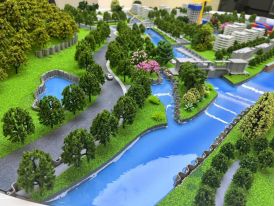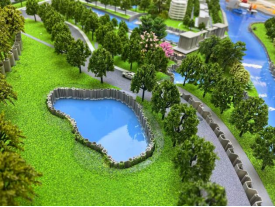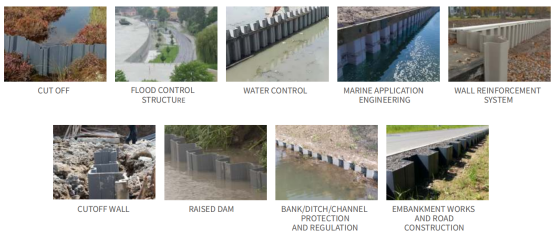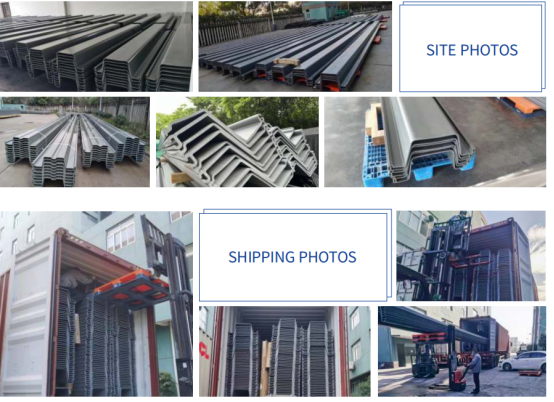Vinyl sheet piling, commonly known as PVC sheet piling. Originally introduced as an alternative to traditional materials like steel, PVC’s emergence as a versatile thermoplastic polymer revolutionized various industries. Over time, it found a vital place in construction due to its lightweight, corrosion-resistant, and eco-friendly properties.
Historically, steel sheet piles have been the dominant solution for deep foundation work. These interlocking sheets provide exceptional strength and longevity, often exceeding 75 years. However, when projects don’t require deep foundations, alternatives such as concrete retaining walls, soldier piles, or reinforced masonry structures have been utilized, though these may sacrifice durability and environmental performance.
Vinyl sheet piling offers a compelling middle ground—combining the structural integrity of sheet pile walls with the cost-efficiency and simplicity of modern materials. Thanks to advancements in polymer technology, vinyl sheet piles now deliver outstanding performance across a wide range of applications, particularly in water-related infrastructure.


Compared to steel, vinyl sheet piles offer a host of benefits. They are lighter, easier to transport and install, and highly resistant to rust and chemical corrosion. Their manufacturing flexibility allows for profiles and shapes comparable to those of steel piles, making them a versatile alternative for both temporary and permanent projects. Their non-reactive nature and lower environmental impact make them especially suited to projects requiring sustainability and long-term durability.

Vinyl sheet piles are produced from rigid PVC, enhanced with additives like impact modifiers, UV stabilizers, and thermal stabilizers to withstand harsh environmental conditions. The manufacturing process involves:
Material Selection: High-grade PVC is selected for its durability and inert properties.
Extrusion: The PVC is melted and pushed through a die to form continuous profiles.
Cutting: The extruded profiles are cut to project-specific lengths.
Quality Assurance: Rigorous checks ensure dimensional accuracy and performance consistency.

Floods cause billions of dollars in damages annually worldwide. For example, in the U.S. alone, flood-related losses exceed $8 billion per year on average. Vinyl sheet piles contribute significantly to flood defense infrastructure by providing effective seepage barriers with a permeability reduction of up to 90% compared to traditional soil barriers. Their corrosion resistance reduces maintenance costs by up to 60% over steel alternatives, extending service life beyond 50 years in aggressive environments.
In environmental remediation projects, controlling groundwater contamination is critical. Vinyl sheet piles with coextruded sealing membranes can reduce contaminant migration rates by 85%, offering superior cutoff performance. Compared to concrete cutoff walls, installation time can be reduced by 30-40%, minimizing site disruption and lowering labor costs.
Studies show that the use of vinyl sheet piling in water control structures can improve flow regulation efficiency by approximately 15%, thanks to the precision of interlocking profiles that limit leakage. In agricultural drainage applications, these systems have increased water retention capacity by 20%, supporting better crop yields and water conservation.
The marine environment accelerates corrosion, leading to steel structure deterioration within 10-15 years if not properly maintained. Vinyl sheet piles, resistant to saltwater and marine organisms, boast an estimated lifespan exceeding 50 years without significant degradation. Their lighter weight reduces installation time by up to 35%, lowering project costs and environmental disturbance during construction.
Vinyl sheet piles have shown a 25% reduction in total foundation settlement compared to traditional retaining walls, thanks to their watertight interlocks and flexibility under load. Projects using vinyl piles report up to 40% faster installation rates, decreasing overall construction timelines and enabling quicker project turnover.
Coastal erosion affects an estimated 70% of the world’s shorelines. Vinyl sheet piles provide durable protection that can reduce shoreline erosion rates by 60% or more. This material’s durability also lowers repair and replacement cycles by up to 50%, contributing to long-term cost savings for coastal communities.
In revetment works, vinyl sheet piles enable secure containment of heavy armor units such as rocks and concrete blocks, improving slope stability by an average of 30%. This enhanced stability directly translates into reduced risk of structural failures and protection of critical coastal infrastructure.
Utilizing vinyl sheet piles in embankment works allows for precise containment of backfill materials, reducing the volume of required fill by up to 25%. This optimization decreases material costs and environmental impact associated with quarrying and transport. Additionally, vinyl sheet piling's adaptability enables installation in challenging terrains, improving project feasibility in constrained urban or coastal zones.
Vinyl sheet piling continues to redefine expectations in both land and marine construction. With its unique balance of cost-efficiency, environmental sustainability, and high-performance characteristics, it stands out as a smart choice for developers, engineers, and municipalities seeking reliable long-term solutions. As construction moves towards greener, more adaptable materials, vinyl sheet piles are poised to play a crucial role in shaping resilient infrastructure for the future.
